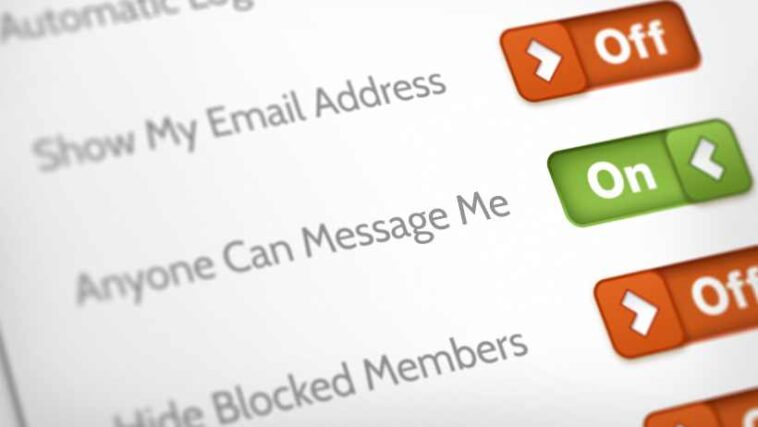Without your knowledge or assent, Apple modified your privacy settings in the most recent iOS 17 update. Two privacy options—”iPhone Analytics” and “Significant Locations”—were inadvertently re-enabled in this update, despite the advice of security experts to the contrary. Although Apple asserts that the data gathered through these options is utilized to enhance their products and services, users have voiced apprehension regarding the possibility that unauthorized parties could gain access to their personal information.
This article examines the matter at hand, offers guidance on how to verify one’s settings, and underscores the criticality of routinely assessing and modifying privacy preferences subsequent to a system update in order to safeguard one’s data.
Introduction: Resetting Privacy Settings in iOS 17
iOS 17, a recently released update, has provided iPhone users with a multitude of noteworthy enhancements and novel functionalities. Nevertheless, numerous users were taken aback when they learned that the update had altered their privacy settings clandestinely and without their consent. This article aims to analyze the concerns pertaining to the privacy settings in iOS 17 and deliver a comprehensive guide on how to rectify the situation. Additionally, we shall examine some optimal strategies for safeguarding privacy on your iPhone.
Synopsis of the iOS 17 Update
A number of new functionalities were incorporated into iOS 17, encompassing improvements to security and privacy. Unfortunately, without notifying the users or obtaining their permission, Apple enabled two privacy options, “Significant Locations” and “iPhone Analytics,” by default. This was a contentious decision. Concerns have been expressed by privacy-aware iPhone users who had previously disabled these settings in response to this unexpected change.
Problem with the Privacy Settings
“iPhone Analytics” and “Significant Locations” are the two privacy settings that have been modified with the iOS 17 update. While both alternatives fulfill valid objectives, their default state of being enabled and the absence of user consent have incited considerable controversy within the privacy community.
A Comprehend of “Significant Locations”
“Significant Locations” lets your iPhone and iCloud-connected devices give location-based information in apps by learning key places. This capability stores data on your iPhone, which Apple cannot access. However, many users worry about illegal access to important data.
A comprehension of “iPhone Analytics”
Conversely, “iPhone Analytics” gathers information pertaining to the specifications of your hardware and operating system, performance metrics, and utilization patterns in order to assist Apple in the enhancement and progression of its products and services. While the data is anonymized prior to its sharing with Apple, certain users continue to harbor concerns regarding the collection and analysis of their information without their explicit consent. The Impact of Deepfake Pornography on Victims
Considerations and Consequences
Modifications to privacy settings in iOS 17 have generated a number of concerns and repercussions. It is reasonable to anticipate that users who deactivate privacy settings will have their preferences honored and not overridden without prior notification. Furthermore, individuals who are particularly susceptible to being targeted should be particularly concerned about the potential compromise of sensitive location data.
Conducting an iPhone Configuration Check
Examine your iPhone’s settings to see how iOS 17 will effect privacy. Check your settings under “Settings” > “Privacy & Security” > “Location Services” > “System Services.”
Procedures for Resetting Privacy Preferences
You can recalibrate the “Significant Locations” and “iPhone Analytics” settings and regain authority over your privacy if you discover that they have been enabled without your consent. A step-by-step guide follows:
Launch the iPhone’s “Settings” application.
After scrolling down, select “Privacy & Security.”
Follow the “Location Services” link to the bottom of the page.
Then, select “System Services.”
Disable the “iPhone Analytics” and “Significant Locations” options.
You can maintain control over your personal information and ensure that the privacy settings on your iPhone are in accordance with your preferences by adhering to these steps.
Best Methods for Protecting Privacy
Several recommended practices, in addition to resetting your privacy settings, can be implemented to further fortify the privacy protection on your iPhone:
Verify that your privacy settings consistently reflect your preferences by reviewing and updating them.
Exercise caution when authorizing access to sensitive data such as location, camera, microphone, and other applications.
Before installing, only obtain applications from reputable sources, such as the App Store, and read user reviews.
Enable two-factor authentication to secure your Apple ID.
Keeping your iPhone OS and apps updated gives you the latest security and bug fixes.
By following these rules, you may improve iPhone privacy and security.
To conclude,
The iOS 17 update provided iPhone users with numerous thrilling features and enhancements. But privacy-conscious individuals are concerned due to the clandestine alteration of privacy settings. Maintaining personal information secure requires that you routinely review and reconfigure your privacy settings in order to ensure that they reflect your preferences.
You can guarantee a more secure and protected digital experience on your iPhone by adhering to the procedures delineated in this article and implementing recommended strategies for safeguarding privacy.



